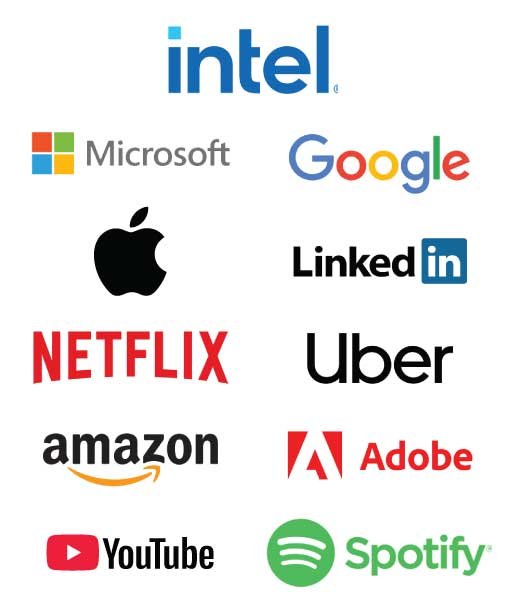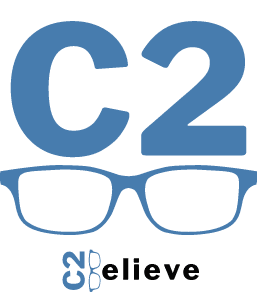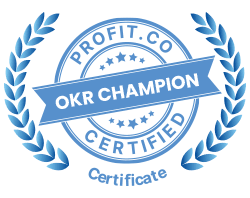🎧⠀Listen and follow
Introducing OKR (Objectives and Key Results)
What is OKR?
It is a modern, goal-oriented management framework developed at Intel. It gained popularity in the 2000s since being adapted by Google, Microsoft, Apple, Netflix, Adobe, and others, validating OKRs extraordinary influence.
Other notable companies using OKR: Meta (Facebook), Trillo, Samsung, Panasonic, Dell Deloitte, Eventrite, X (Twitter)

(Look who’s using OKR)
Why OKR? Most companies face headwinds.
Management strategy or culture in Taiwan Tech companies are usually not well defined. They may run variations of MBO, KPI, SOPs, or simply top-down management control, but sooner or later, run into various challenges.
CEOs are the first to acknowledge some conflict, disorganization, dissatisfaction, or lack of direction, but are unsure how to adjust after several years of operations.
OKR is a major upgrade to predecessor management systems addressing many of these problematic areas.
OKR Superpowers – the F.A.C.T.S.
John Doerr, in his book “Measure what Matters”, describes the five OKR Superpowers as a 5-letter acronym that enumerates the powerful advantages of the OKR Framework – the F.A.C.T.S.


Focus
Focus on the priority goals for the current period to make an immediate business impact.

Align
Align teams, individuals and projects, concentrating attention and energy to achieve priority goals.

Commit
An individual promise to make their best efforts to complete the OKRs assigned to them.

Track
Track and Monitor to communicate progress and make timely adjustments as needed.

Stretch
Aspire for bigger and better things – Everyone has a green light to dream big, grow and achieve.
Learn more here – “What are OKR superpowers – The F.A.C.T.S..
Writing an Objective and Key Results
Writing Objectives and Key Results are conceptually easy.
Think of an Objective you really want to get done this quarter – we’ll use a sports example for simplicity:
Objective: Make the college basketball team.
Then you list the metrics that will show how you will reach your Objective.
- Key Result – Shoot 90% from free-throw line.
- Key Result – Shoot 40% from 3-point line.
- Key Result – Increase vertical leap from 30″ to 35″ vertical.
- Key Result – Increase 40 yard dash from 4.9 seconds to 4.6 seconds.
Note that all the Key Results are metrics that can be tracked throughout the quarter – they are unambiguous, indisputable outcomes by the numbers. Also note that accomplishing all KRs doesn’t mean you actually make the team – but it gives you the best chance, and you will have made progress no matter what.
It’s that simple, but you’ll learn that there are nuances when you start writing OKRs for business projects.
Learn more about writing OKRs see “How to write OKRs“.
OKR vs KPI and MBO
These are the top strategic goal-oriented management systems in use.
- KPI – Key Performance Index
- MBO – Management by Objectives
- OKR – Objectives and Key Results
KPIs are frequently used in Taiwan companies. You can find MBO also being used but less frequently. OKRs are also less frequently used but has been gaining traction in the last few years.
KPIs simply uses metrics to gauge company health or to set future goals based on those metrics. There’s no other strategies that KPI specifically endorses. In fact you can incorporate KPI metrics as OKR Key Results.
OKR was derived from MBO, improving on the latter’s deficiencies, so there’s no comparison – OKR wins.
If you want to see a detailed side-by-side comparison of the three systems see “OKR MBO KPI Comparison Chart“.
Also see “OKR vs KPI” and “OKR vs MBO”。
OKR Builds Culture
Skilled Management, People-power, Aspiration and Achievement.
OKRs bring much needed structure, discipline and organization to companies, building a foundation for a good working culture, that mitigates a lot of the challenges companies face when navigating the changing landscape of markets, competition and employees.
Important company goals get done
Alignment and focus
As an organization grows, it’s easy to lose focus on the important company goals. In effect, you get different teams moving in different directions. Schedules don’t line up and nothing gets done.
With OKR, all projects descend from a single point, which is the company’s mission. It helps leadership align and organize projects when teams understand the big picture. They work together to get things done faster.


Shorter planning period keeps projects on track.
When the planning period is annual or semi-annual, it’s easy to lose focus of time and get off track, resulting in project delays.
With OKRs, companies will conduct shorter burst planning at the beginning of each quarter. This means projects are assessed more frequently and adjustments are made on a timely basis.
Furthermore, it’s easier to be motivated by goals that are more visible on the near horizon.

Progress-based management
Boosts accountability and reduces meetings.
Frequent progress meetings take up a lot of time in companies. Any time someone has to upend their work and go for a meeting is a significant hit on progress.
With OKRs, Key Results are designed to be measurable, by quantitative number (e.g. Sales Q1). Each Key Result owner maintains progress on a public forum – this keeps individuals motivated to meet objectives and allows managers to review progress at any time without having too many meetings.


Builds a culture of discipline
Company on auto-pilot.
Company culture is linked to how disciplined a company is. Without an established culture, there will be variability in the company, which leads to inefficiency and dysfunction.
A robust management system like OKR focuses on cadence and culture. Quarterly planning, progress tracking, and self-review by every staff member means everyone is managing to the same beat. Ultimately, you can trust your staff to reach goals without micromanaging – virtually on auto-pilot.

People Oriented Culture
Inspired and responsible staff.
One of the most challenging managerial questions is how you inspire your staff to do their best every day. Because it’s about human behavior, it’s often avoided, or substituted with pizza day, or snacks at the coffee dispenser.
Aside from all the theories we learned in business school, the common denominator is that people want an opportunity to learn, grow, achieve, and be recognized.
OKR also encourages inclusion at every level. This means bottom-up collaboration. It means everyone participates in planning, tracking, and reviews, important managerial skills for future promotion.


OKR is about growth and improvement
Aspirations to grow and get better.
A concept of “stretch” is built into OKR culture – it means to push yourself, take a chance, and always aim higher. If you shoot for the moon and end up on the roof – it’s still progress.
Quarter-end self-reviews are also an important practice that encourages staff to review their recent challenges and reflect on the future – improve on yesterday.

Management Training Platform
Everyone is managing.
Most companies do not provide any management training, leaving new managers struggling to lead teams effectively.
As mentioned, in OKR, everyone participates in planning, tracking, and assessment. Everyone learns commitment and accountability. These are all disciplines that are important for future managerial positions. Anyone participating in OKR is essentially training to be a manager.

Learn more about how “OKR Builds Company Culture “
OKR – Getting big things done in short time.
Running a business is tough. A lot of internal and external factors create headwinds for a CEO. They acknowledge change is needed, but habits become entrenched over the years, and they feel stuck.
OKR is a goal-oriented management framework focusing on the important company objectives, whose progress can be tracked over time. It connects strategy with execution, emphasizing best practices of Focus, Alignment, Commitment, Tracking and Stretching (F.A.C.T.S.).
It’s no wonder that important companies like Google, Microsoft, and Apple have adopted OKRs. And that is to build a culture that is focused, inspired, agile, and committed to get big things done in short time.
Feel free to contact us on how OKR can benefit your company.

OKR Training Classes in Taiwan
C2believe provides OKR training with classtime, exercises, and coaching.
On Site or Off Site | English or Chinese | In Taiwan (or remote)
- Introduction to OKR for leadership (2 hours)
- Team OKR Class (18 hours) – Classtime, exercises and coaching
- 8-month OKR deployment (coaching and train the trainers)
Contact us about your OKR training needs here









0 Comments